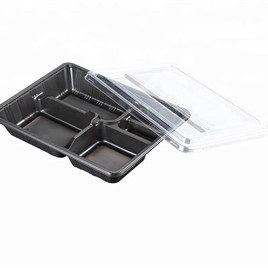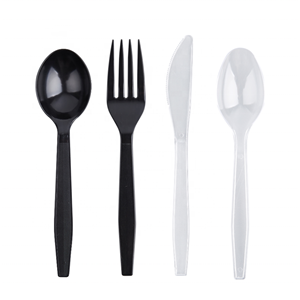Q1、Are there any regulations on food packaging materials?
All food-contact articles including water bottles and food containers, imported, used or sold in singapore are required to comply with the safety requirements as stipulated under regulation 37 of the food regulations. it is also the responsibility of the food manufacturer and trader to ensure that the food contact articles used for storing or for commercial packing of their food do not migrate any harmful substances into the food.
Q2、Do i need to get approval from sfa for the use of food contact articles / food packaging material?
Sfa does not grant pre-market approval for food contact articles. all food contact articles imported, used and sold in singapore are required to comply with the safety requirements as stipulated under regulation 37 of the food regulations. it is also the responsibility of the food manufacturer and trader to ensure that the food contact articles used for storing or for commercial packing of their food do not migrate any harmful substances into the food.
Q3、What are the labelling requirements for food-contact articles/ food containers?
The food regulations do not stipulate the labelling requirements for food-contact articles/food containers. however, manufacturers and trader may label the food-contact articles/food containers on a voluntary basis.
Q4、Can i reuse plastic packaging / containers to store food?
Commercial plastic packaging that has been used for storing non-food items (e.g. detergents) should never be reused as food containers. they have not been tested safe for food storage and they may contain non-food residues that contaminate food.plastic packaging that are used for commercial packing of food and takeaway plastic food containers used in eating outlets are disposable items designed for single use and are not intended for repeated storage of food. they are safe for their immediate intended purpose but not beyond what they are designed for.plastic packaging for microwaveable convenience meals are designed for one-time usage with the type of food packed in it and should not be reused for storing or microwave heating of food.only use reusable plastic food containers (e.g., cups, plates, bowls, bottles and boxes that can be purchased at the kitchenware section in retail stores) for repeated storage of food. these containers have the sturdiness, thermal stability and other attributes needed for a reusable food container.reusable plastic food containers can be subjected to wear and tear over a period of use. they should be replaced when they have turned cloudy or discoloured or if cracks or heavy abrasions start to appear.more information on the safe use of plastic food containers is also available under safe use of plastic food packaging.
Q5、Are takeaway plastic containers safe for storing food?
Take-away plastic packaging/containers used by eating outlets are obtained from either local manufacturers or importers.local manufacturers and importers are required to ensure that their food-contact articles including take-away plastic containers comply with the safety requirements of the singapore food regulations and that they do not migrate any harmful substances into the food.as a part of sfa’s food safety surveillance programme, sfa routinely conducts post-market surveillance, involving the sampling and testing of food contact articles, to ensure that they do not release any harmful substances. take-away plastic containers are safe for their intended use.
Q6、Are take-away plastic bags / containers safe for storing hot drinks and food?
Takeaway tie-up plastic bags and plastic containers that are intended to hold hot drinks and food are made of thermostable plastics and are able to withstand the temperature of hot drinks and food. they are safe for their intended use.
Q7、Are reusable plastic containers safe for storing hot drinks/food?
When manufacturers design a plastic packaging, they will take into consideration the type of food and its contact time with the packaging, and the amount of heat to which the plastic will be subjected to.consumers are advised to follow the manufacturer’s instructions on the proper use of plastic food containers/bottle and regarding the suitability of the containers/bottles for storage of hot food/drinks. if in doubt, do not use plastic food containers/bottles to store hot food/drinks.
Q8、Is it safe to use plastic containers / styrofoam in microwave oven?
Only use plastic containers that are labelled as microwave-safe for microwave cooking or reheating. do not use the container in a microwave oven if you are in doubt or unable to find the manufacturer’s instructions for microwave use.
Q9、What type of plastic are food storage containers made from?
Food containers can be made from a few different plastics, with some of the most common being high-density polyethylene (HDPE), low-density polyethylene (LDPE), and polypropylene (PP). If you would like to know more about one of our products, simply get in touch or give us a call on 01609 760 773.
If you want to recycle a plastic food box, it’s important to know that the type of plastic it is made from can determine how you go about this. Depending on the type of plastic, you may or may not be able to recycle it – look for the plastic reference code on the bottom of your container and compare these to the codes collected by your local council’s recycling service. This information can usually be found on their website.
Q10、Are plastic food containers BPA (Bisphenol-A) free?
BPA (Bisphenol-A) is a chemical that is used in some plastics to give them greater strength and clarity. Some studies have linked the substance to health hazards so, although there has been no conclusive evidence presented that proves it is harmful, many companies have produced BPA-free plastics as a precaution and to meet public demand.
However, some food containers are still made with a BPA plastic. Those that do tend to be made from polycarbonate, whereas BPA-free options will be made from one of the more common plastics like high-density polyethylene (HDPE), low-density polyethylene (LDPE), or polypropylene (PP). The easiest way to tell is to refer to the plastic reference code on the bottom of your container. If it is marked as number 7, there is a chance that it could contain BPA — codes 1 to 6 are BPA-free.
Here at Plastic Box Shop, we’ve conveniently marked all of our BPA-free products with a green icon so that you can be confident in your order with us. For more information on BPA and identifying BPA-free products, please refer to our guide to BPA plastics .
Q11、Are plastic food containers airtight?
There are a large variety of plastic food containers available, and some are airtight while others aren’t. Those that are designed to keep your food as fresh as possible will be fully sealed, and you can usually tell from their firmly closing lid or locking mechanism. Others that have more loose-fitting lids will not be airtight. Many of our plastic food boxes are airtight — look for products with sealable lids or a clip-and-lock mechanism for maximum freshness. If you are not sure, simply get in touch and we will be happy to help.
Q12、How should I clean my plastic food container?
Plastic food boxes can be cleaned with a non-abrasive sponge or cloth in hot soapy water. Afterwards, rinse with clean water to remove any suds. Drying with a tea towel will prevent water spots forming on the plastic, but you should leave boxes out to thoroughly air-dry afterwards. Avoid applying the lid, as this can trap unwanted moisture and stale air.
Alternatively, you can find out if your plastic boxes are dishwasher-safe.
Q13、Should I wash new plastic food containers before using them?
It’s unlikely that plastic food containers will be sterilised before they are packaged, so you should always wash new products to be safe. See our advice on hand-washing or putting them in the dishwasher.
Q14、How can I clean stains in my food storage containers?
Certain food products, like tomato sauces and curries, can leave orangey stains in your food storage containers. You can reduce the risk of staining by coating your container with non-stick spray or oil before adding your food. If some staining does occur, you can clean it using baking soda. Simply mix a thick paste of warm water and baking soda and rub it into the container. Allow it to sit for one day before rinsing — repeat if necessary.
Q15、What should I do if my food container gets mouldy?
Mould most commonly occurs when a plastic container is left with some food particles inside for a period of time without being cleaned. While thoroughly cleaning your container will remove most of the particles, it is safer to disinfect it too, as some moulds can be toxic.
Simply leave the affected container to soak in a mixture of unscented bleach and water — 55ml of bleach for every 1 litre of water — for 30 minutes. Thoroughly wash and rinse them afterwards.
Q16、Are plastic food containers dishwasher-safe?
Many plastic food boxes that are dishwasher-safe are marked with a symbol to indicate this. There is not an industry standard, but most look like a plate or glass with a water drop above it. If you aren’t sure, you can take extra precautions by washing your containers in the top shelf of your dishwasher, where the heat will not be as intense. With food boxes that contain BPA , it’s better to take the extra time to clean them in the sink. This is because the high temperatures that a dishwasher exposes your containers to can release undesirable chemicals more so than hand-washing them.










